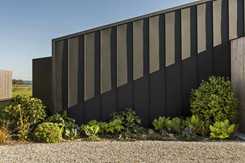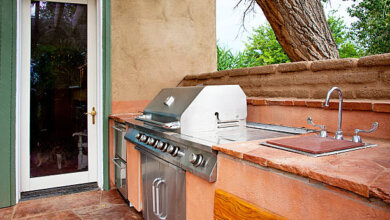
Wood cladding is an aesthetically pleasing and highly functional option for cladding the exterior of your home or building. Not only does it provide protection against the elements, but it also enhances the building’s curb appeal and energy efficiency. If you’re considering installing wood cladding, this guide will take you through the key considerations, benefits, installation steps, and maintenance tips to ensure you achieve the perfect finish.
What is Wood Cladding?
Defining Wood Cladding for External Walls
Wood cladding is the application of wooden panels to the exterior walls of a building. It’s used as both a decorative and protective element, giving buildings a natural, warm appearance while providing insulation and resistance against weather. Wood cladding is an incredibly versatile option, offering various finishes and styles to suit different architectural tastes.
Types of Wood for Cladding
Cedar
Cedar wood is one of the most popular choices for external cladding due to its natural resistance to decay, insects, and moisture. It has a beautiful, rich color and a pleasant scent that adds to its appeal.
Redwood
Redwood is another durable and aesthetically pleasing choice. It offers excellent protection from the elements, as it resists warping and fading. Its deep red hues provide a striking appearance.
Pine
Pine is an affordable and sustainable wood option for cladding. Though it may not offer the same level of natural resistance to decay as cedar or redwood, when treated correctly, it provides long-lasting durability.
Advantages of Wood Cladding
Key Benefits of Using Wood Cladding for External Walls
Aesthetic Appeal
Wooden cladding adds a unique and natural look to any property. The warm tones and natural grains of wood create a timeless design that can complement any architectural style, whether traditional or modern.
Durability and Weather Resistance
Wood cladding is highly durable when properly treated and maintained. It provides a robust barrier against harsh weather conditions, including rain, wind, and extreme temperatures.
Insulation and Energy Efficiency
Wood is a natural insulator, helping to regulate temperatures within your home. This can reduce your reliance on heating and cooling systems, leading to lower energy bills.
Preparation Before Installing Wood Cladding
Steps to Take Before Cladding Your External Wall with Wood
Before you begin installing wood cladding, there are some essential preparatory steps to follow.
Assessing the Wall
Check the wall for any damage or imperfections. Ensure the surface is dry and level, as uneven surfaces can affect the quality of the installation.
Selecting the Right Wood for Your Project
Consider factors like the climate, the desired aesthetic, and your budget when selecting the wood. For wetter climates, opt for moisture-resistant options like cedar. For warmer climates, pine might be a suitable choice.
Preparing the Wall Surface
The wall surface must be clean and primed for better adhesion. Remove any debris, dirt, or old cladding, and ensure the surface is smooth.
Tools and Materials Required
You will need several tools for the installation, including a tape measure, level, saw, hammer, nails or screws, and a weather-resistant finish.
Installation Process
How to Install Wood Cladding on Your External Wall
Follow these step-by-step instructions to install wood cladding on your external walls:
Step-by-Step Installation Guide
Measuring and Cutting Wood Panels
Measure the wall and mark the dimensions on the wooden panels. Cut the wood carefully to ensure a perfect fit.
Securing the Panels
Start at the bottom of the wall and work upwards, securing each panel with nails or screws. Make sure the panels are level and evenly spaced.
Creating the Right Finish
For a polished look, ensure that the edges are smooth and that each panel aligns perfectly. Consider using a stain or finish to enhance the wood’s natural beauty and ensure it’s protected from the elements.
Dealing with Expansion and Contraction
Wood can expand and contract due to weather conditions. Leave small gaps between the panels to accommodate this movement and prevent warping.
Maintenance and Care for Wooden Cladding
How to Maintain and Care for Your Wooden Wall Cladding
Proper maintenance is key to prolonging the lifespan of your wood cladding.
Regular Cleaning
Regularly wash your wood cladding with water and a gentle cleanser to remove dirt and grime. Avoid using harsh chemicals that could damage the finish.
Sealing and Protecting Wood
Sealing wood cladding with a protective finish helps shield it from moisture, preventing rot and decay. Apply a high-quality wood sealer every few years.
Treatment and Staining
To maintain the wood’s color and prevent fading, apply a wood stain or treatment designed for outdoor use. This will keep the wood looking fresh and vibrant.
Common Problems and Solutions
Addressing Issues You Might Face with Wooden Cladding
Wood Rot and Moisture Issues
Wood is susceptible to rot if exposed to constant moisture. Regularly inspect your cladding for any signs of damage, and treat it with a fungicide if necessary.
Fading and Discoloration
Wood naturally fades over time due to exposure to sunlight. Protect the wood with a UV-resistant stain to minimize fading and discoloration.
Cost of Cladding an External Wall with Wood
Budgeting for Wood Cladding: Costs and Considerations
The cost of installing wood cladding depends on several factors, including the type of wood, the size of the project, and the complexity of the installation.
Material Costs
Cedar and redwood are typically more expensive than pine, but they offer better durability and aesthetic appeal.
Installation Costs
Professional installation costs can vary depending on the complexity of the job. DIY installation can help save on labor costs but may require additional time and effort.
Long-term Investment
Wood cladding is a long-term investment that can add value to your property, improve energy efficiency, and enhance the curb appeal of your home.
Frequently Asked Questions (FAQ)
Can I Install Wood Cladding Myself?
Yes, you can install wood cladding yourself, provided you have the right tools and skills. However, professional installation is recommended for larger projects or if you’re unsure of the process.
How Long Does Wood Cladding Last?
With proper maintenance, wood cladding can last anywhere from 20 to 50 years, depending on the wood type and environmental factors.
Can Wood Cladding Be Used in All Climates?
Wood cladding can be used in most climates but may require additional treatment in very wet or hot areas to prevent decay and damage.
How Often Should I Maintain Wood Cladding?
Wood cladding should be maintained regularly, with cleaning every six months and re-sealing or staining every 2 to 3 years.



